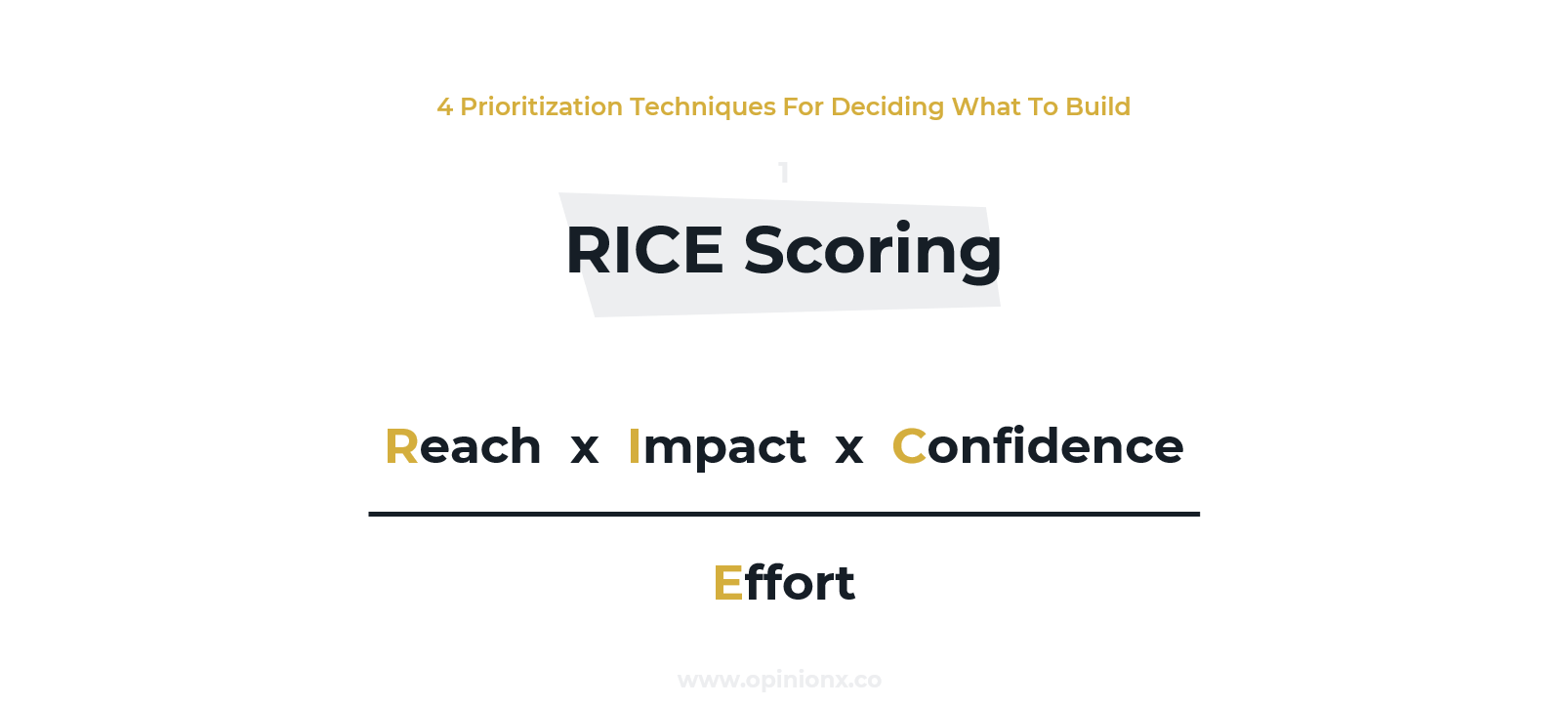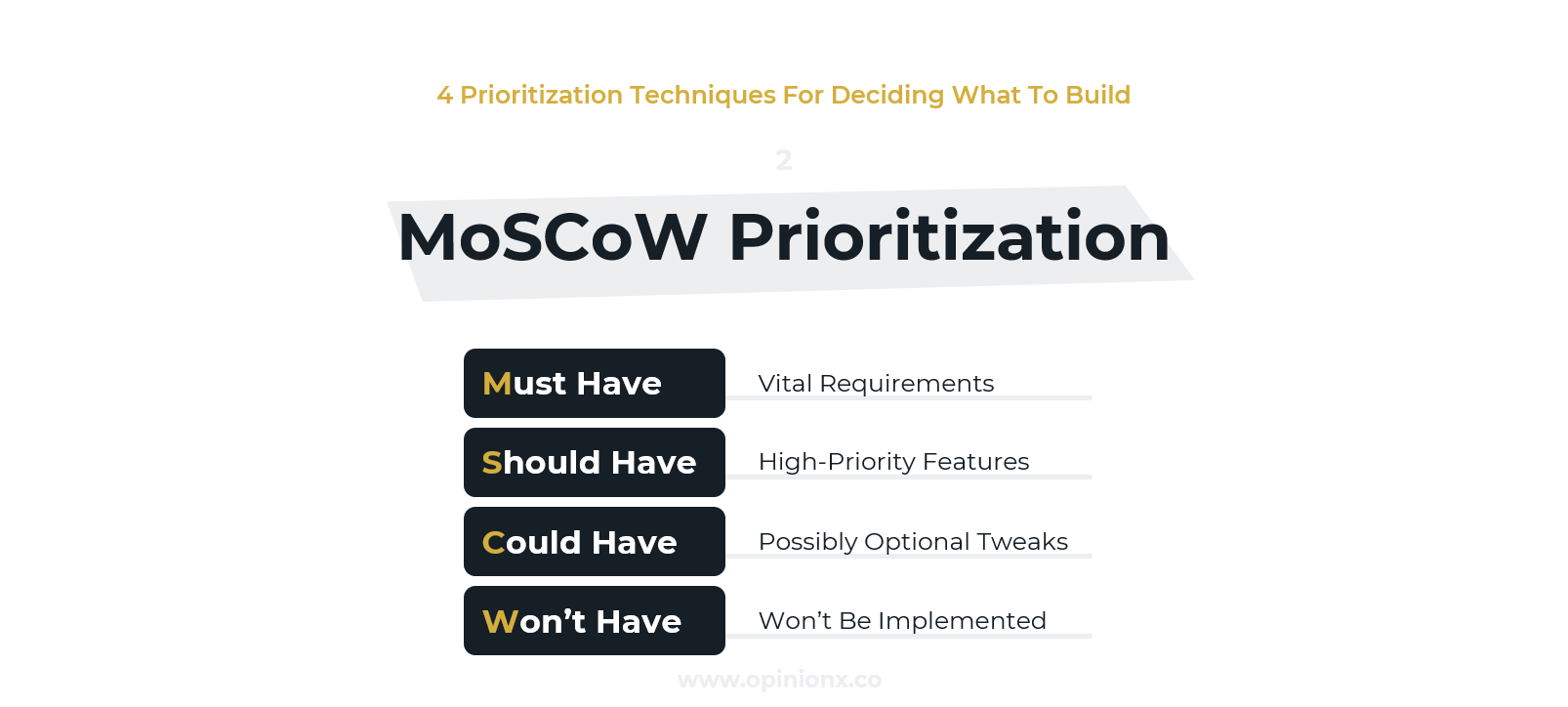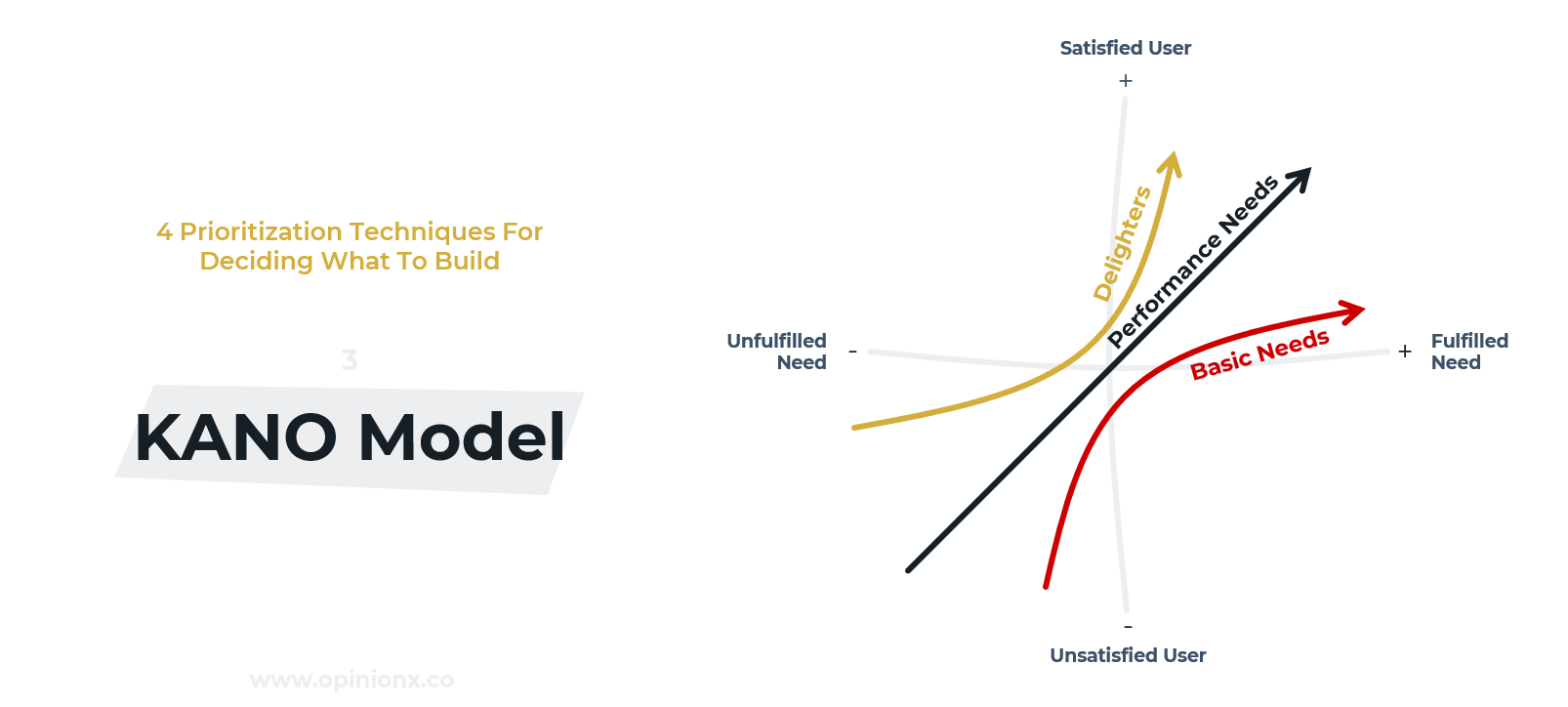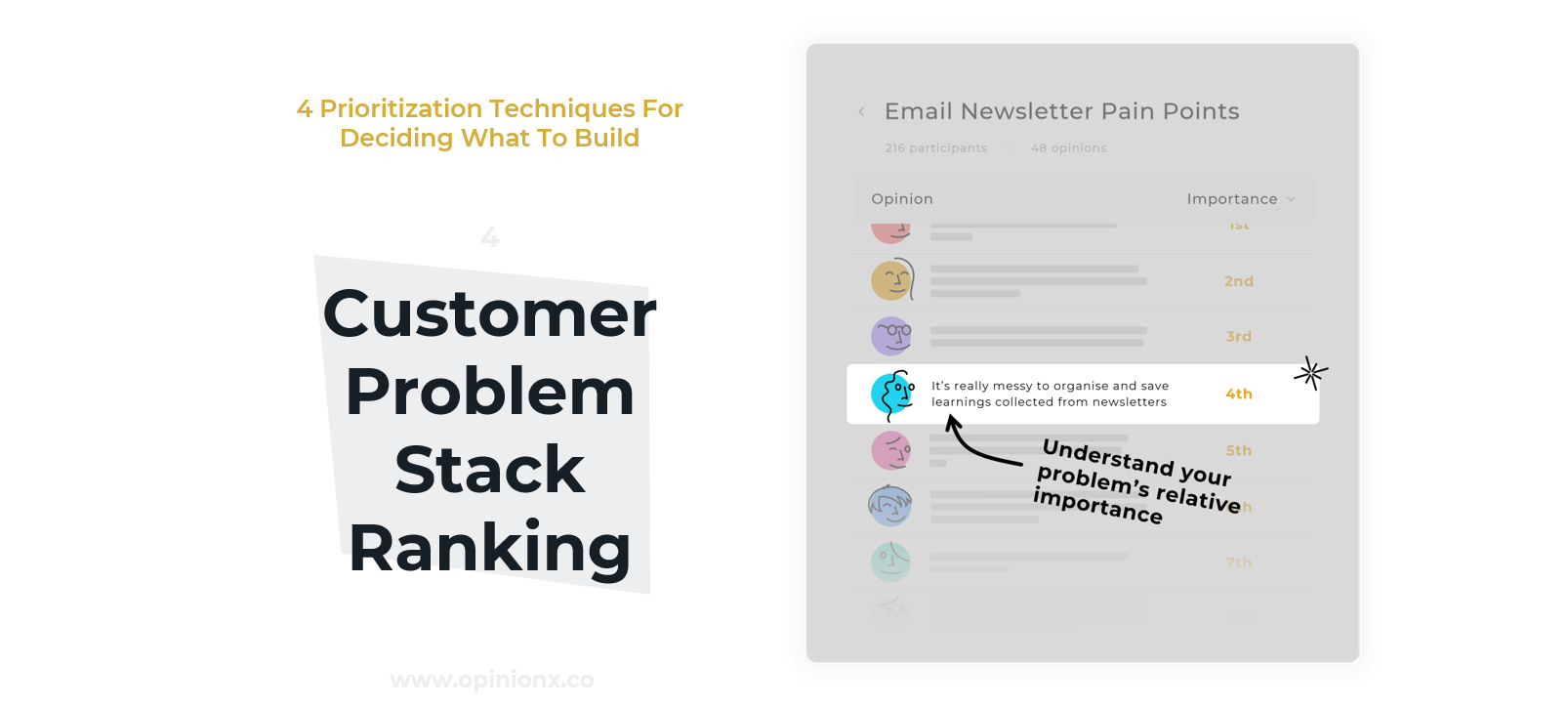4 Prioritization Techniques For Deciding What To Build
While prioritization is important for every job, Product Managers need to be ruthless at prioritization to a whole other level. As a PM, it's up to you to decide which features should be built, which features require more research and which features should be abandoned altogether. This is an onerous process made even more difficult by conflicting opinions collected from customers, engineers, data analysts and the executive team.
Luckily there are great prioritization frameworks available that help you to sort through the noise and decide what to work on. Let's explore 4 techniques that can for deciding what you should be building.
1. RICE Scoring
The RICE Scoring system is one of the most popular methods Product Managers use for informing their roadmap prioritization. RICE Scoring assesses priorities by looking at 4 categories: Reach, Impact, Confidence and Effort.
Reach:
How many people will be impacted by this feature? Use the data at your disposal to estimate how many people will use the feature each month. This can be calculated by understanding the profile of customer that needs this feature and then counting how many people fall into that group.
Impact:
How much will they be impacted? It's not enough to know how many people will be impacted by the feature. You also need to know the depth of that impact. Measuring impact can be difficult as there is no perfect calculation. We suggest that you should rate the impact between 0-3, with 3 indicating massive impact and 0 indicating no impact.
Confidence:
How confident am I that this feature will be effective? Once again, measuring confidence is subjective and unscientific but most experienced product people can make a reasonable estimate of how successful the feature will be.
Effort:
How much effort is it going to take to build this feature? As a product manager, you will want to consult your design and technical colleagues to get the most accurate estimate. Account for time, complexity, opportunity cost and other relevant factors, you can score the effort required between 0-5, with 0 being easy peasy and 5 being endless sleepless nights.
Calculating the RICE Score:
Multiply your metrics for Reach, Impact and Confidence, then divide by Effort to get your RICE score. Compare this score to other potential features to prioritize your roadmap or backlog.
2. The MoSCoW Method
The MoSCoW Method is a super simple, calculation-free prioritization method that you can use to quickly identify what's important and what's not. The name is derived from the 4 categories it uses: Must Have, Should Have, Could Have, and Won’t Have.
Must Have:
These features are non-negotiable. You simply cannot launch your product without these features. There are many reasons why a feature might fall into this category; it could be that the feature is the core of your value proposition, it serves as the primary layer of security or that your sales team promised it to the top-paying customers. Either way, you aren't going to get away without building this.
Should Have:
These features are ideal. However, they won't run your company into the ground if they're missing. It would just be best for everyone involved if they existed.
Could Have:
These features are not a requirement for success. They can be considered "nice to have".
Won’t Have:
These features don't make the cut this time around. This doesn't mean they won't be included on a later version of the product.
3. Kano Model
The Kano model looks at product features across 3 dimensions and is best represented through a graph.
Delighters:
These features make your customers go Woweeee. They leave a long-lasting impression and leave your competitors behind eating your dust.
Performance Needs:
These are the features that help your customers achieve their goals better. They are much appreciated and leave customers feeling content.
Basic Needs:
Without these features the product is useless. These features are the minimum that your users expect.
You’ll need to conduct questionnaires or speak with your customers to understand which features they feel belong in each category. Your goal at a PM is to work your way up this list. First, you ensure that all Basic Needs features are working perfectly and there is no friction involved in using them. Then you move to building features to address Performance Needs where your customers start to really value your offering. Finally, you blow them away with Delighters and value-up offerings.
4. Customer Problem Stack Ranking
All of the best products and features solve a burning customer problem. Customer Problem Stack Ranking asks your users to rank their problems in terms of importance. This allows the PM to see which problems are most urgent to solve.
Customer Problem Stack Ranking requires participation from customers and can be conducted in two ways:
1) Manual Customer Problem Stack Ranking
This involves asking customers to list their problems and then rank them in terms of importance. Manual customer problem stack ranking can be conducted during user interviews.
2) Automated Customer Problem Stack Ranking
This means using customer stack ranking software. The advantage of using software over the manual process is that you can conduct your stack rank at scale, understanding the most important problems to everyone, rather than just a few.
Stack Ranking problems is often used by companies who adopt outcome-focused objectives ("increase revenue by 25%") rather than output focused objectives ("built features X, Y and Z"). Customer Problem Stack Ranking is also used at other stages of the product development cycle, like validating product ideas and refining product messaging.
So, which model should I use?
Your method should reflect your project needs. For a quick and easy check, the MoSCoW method can help you to sort a list of tickets. To leverage internal knowledge, RICE Scoring uses more factors than the MoSCoW Method for a more informed result. The ideal approach, especially for new projects, is to gather insights from user research with methods like Customer Problem Stack Ranking or the Kano Model.
Of course, these aren’t the only prioritization methods available. There are many more ways of doing it and you can really only find what works best for you through practice and testing! Create a free Customer Problem Stack Rank on OpinionX in just 60 seconds.




